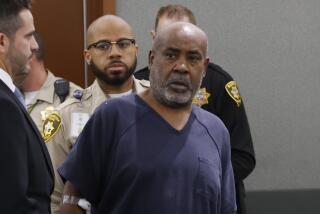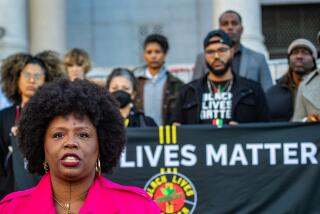The death of Freddie Gray: What we know - and don’t know
- Share via
Civil rights leaders are promising demonstrations in Baltimore for the rest of the week to protest the death of Freddie Gray, whose spine was severed while in police custody. It is the latest case of an unarmed African American to die after an encounter with police and raises the same questions with which the nation has been wrestling for more than a year. Here is what we know — and don’t know — about the case.
Who was Freddie Gray?
Gray was a 25-year-old resident of the neighborhood around the Gilmor Homes, a Baltimore Housing Authority project. He stood 5 feet 8 and weighed 145 pounds. He had a police record, mainly on drug charges and minor crimes, according to court records reported by the Baltimore Sun.
What happened on April 12?
Gray and a friend were walking in the neighborhood when they and police crossed paths about 8:39 a.m., according to the police timeline of events. Police said that Gray and his friend ran and that officers gave chase.
Did police have probable cause to give chase?
This is one of the areas being investigated. The family says there was none, but police will probably point to a charging document that says Gray had a switchblade, which is illegal, and could have faced a year in jail if convicted. It is unknown how police knew about the switchblade, however. The knife was found clipped to the inside of his right pants pocket. A comment by Mayor Stephanie Rawlings-Blake was an indication of just how contentious this question is: “We know that having a knife is not necessarily a crime,” she said, calling it “not necessarily probable cause.” At a televised news conference Wednesday, police union officials said the officers did not need probable cause because it was a high-crime area.
What happened after the stop?
Officers caught up with Gray, who gave up without a struggle, according to police. One officer took out a stun gun but it was never fired. Gray asked for an inhaler and police called for a wagon to transport him. A video shows Gray on the ground with two officers; Gray, hands cuffed behind his back, is then put into a police van. What happened in the van was not recorded. Some police vans have television cameras, but they do not have recording capabilities, union officials said.
Did the van then go directly to police headquarters?
No. At 8:46 a.m., about seven minutes after the incident began, police reported that Gray was acting “irate.” The van stopped and Gray was taken out and put on the ground. Cellphone videos that surfaced this week show police putting leg irons on Gray, who is then put back into the van. Authorities say they have interviewed several witnesses who saw the second stop, and more witnesses were being sought.
Did the van then go directly to headquarters?
No. Police say Gray was complaining about his health, so the officers in the van asked for an additional unit to check on Gray. Meanwhile, a suspect arrested in an unrelated case was picked up for transport as well. The two prisoners were separated by a metal barrier and had no contact. By 9:24 a.m., a paramedic was called, less than an hour after Gray was initially detained. Gray slipped into a coma and died a week later.
How did Gray die?
According to an autopsy, Gray died from an injury that severed his spine. There were no indications of force or bruising, police said, and they do not know when or how his spine was severed. The family has said that Gray suffered three fractured vertebrae and that his larynx was crushed. The union insisted that none of the officers did anything criminal, and it warned against a rush to judgment.
“When Mr. Gray was put in that van, he could talk and he was upset,” Deputy Police Commissioner Jerry Rodriguez said during a televised news conference. “When he was taken out of that van, he could not talk and he could not breathe.”
Is police violence in Baltimore an issue?
The use of force by police is always an issue, especially in the wake of events in Ferguson, Mo., Staten Island, N.Y., and North Charleston, S.C. Last month, the American Civil Liberties Union reported that 109 people had died after encounters with police in Maryland between 2010 and 2014. Baltimore had the highest number in the state, 31. The report also found that 45 of the 109 were unarmed and that 75 were black.
It is hard to compare Baltimore with other cities or states because there are no official national statistics, but the mayor and police commissioner have said they were aware of community concern, which is why they asked the U.S. Justice Department to examine police policy and procedures. Union President Gene Ryan also acknowledged that there have been tense relations between police and the community.
What has happened on the investigation front?
The six officers involved in the case have been suspended pending a local police investigation. In addition, the Justice Department announced it would investigate to see whether a federal civil rights charge was warranted.
michael.muskal@latimes.com
Twitter: @latimesmuskal
More to Read
Sign up for Essential California
The most important California stories and recommendations in your inbox every morning.
You may occasionally receive promotional content from the Los Angeles Times.











